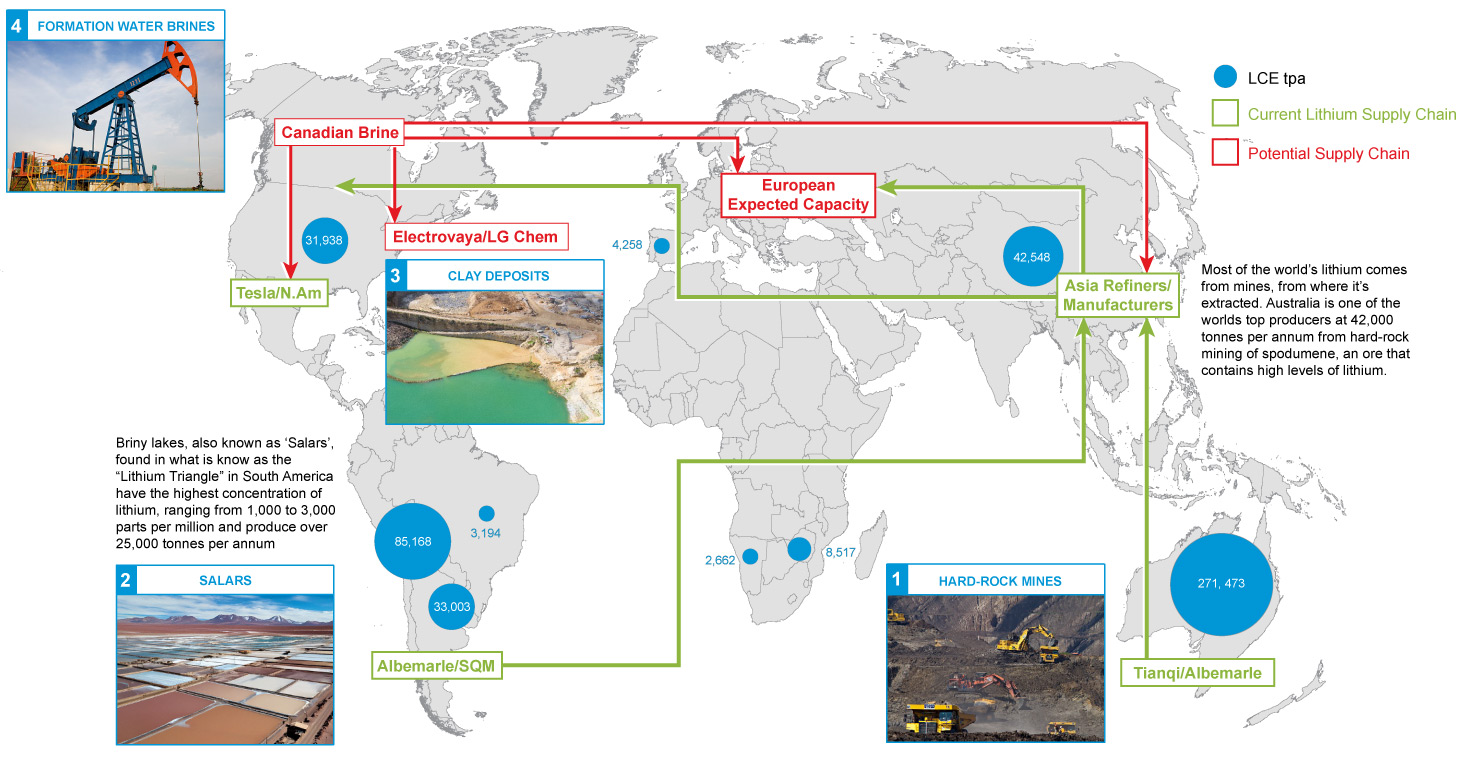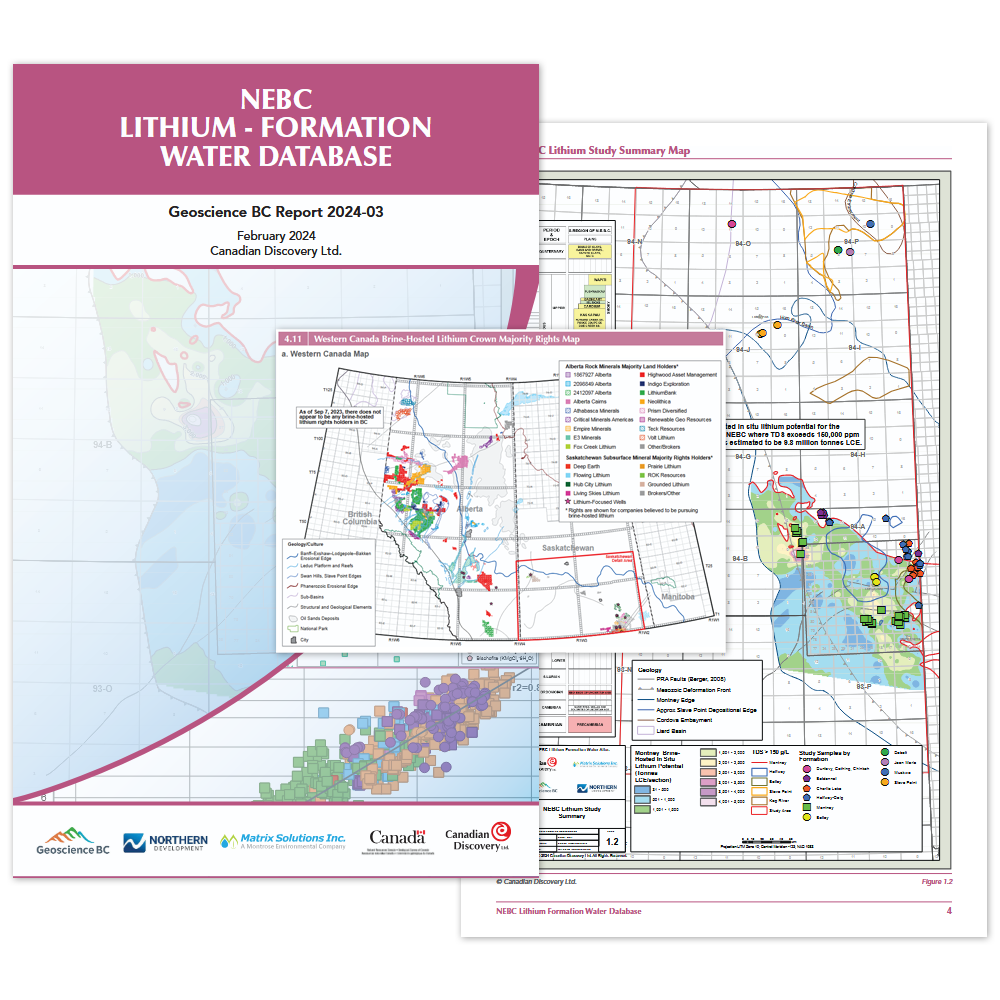- Numerous applications including batteries, ceramics and glass, and pharmaceuticals
- Demand continues to increase; between 2018 and 2020, the end-use market for lithium in batteries increased from 46% to 65% (USGS, January 2020)
- Decarbonization and clean electrification to meet global emissions reduction targets

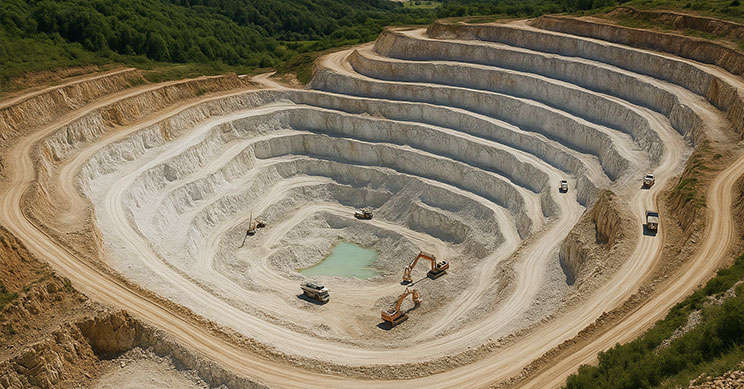
- Lithium mine - open pit; large surface area required for operations = greater environmental impact

- Brine pools and processing areas such as the SQM lithium mine on the Atacama salt flat in northern Chile span up to 50 km wide and 100 km long
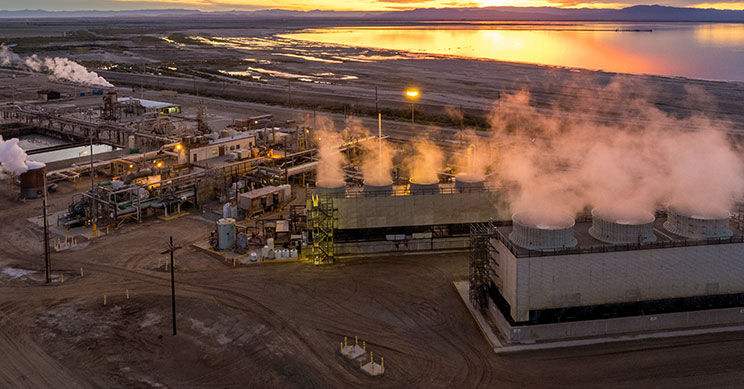
- Salton Sea geothermal plant in Imperial County, California—Pairing lithium and geothermal production
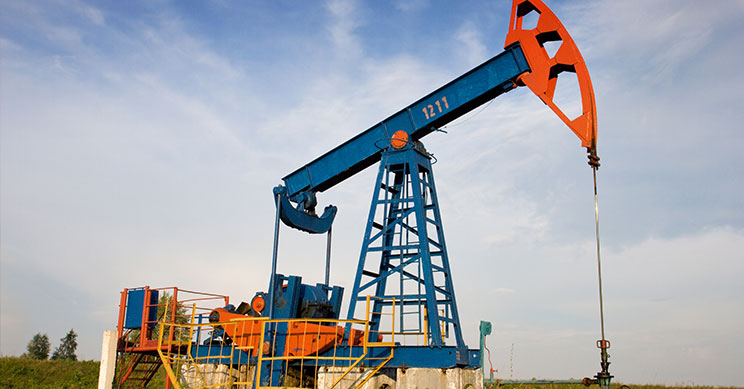
- Utilizing existing O&G infrastructure and emerging extraction technology
- Repurposing existing infrastructure and land use = smaller environmental impact
Lithium concentration refers to the process of increasing the amount of lithium in a given material. These processes typically involve extraction techniques that separate lithium from other minerals or compounds found in sources like lithium-rich brines and clay deposits.
Geological criteria favourable to lithium enrichment have been identified including:
- Tectonically driven subsidence
- Associated igneous, volcanic or geothermal activity
- Periods of restricted basin conditions
- Interactions with basement-derived hydrothermal fluids
- Proximal felsic bedrock and volcanic terranes
- Arid to semi-arid paleoclimates often recorded by evaporite deposits
- Presence of adequate aquifer units

Direct Lithium Extraction (DLE) is a method used to efficiently extract lithium from brine sources with a lower environmental impact than traditional methods. In DLE, lithium is removed from the brine using advanced technologies such as solvent extraction, ion exchange, or selective adsorption.
Preferred methods of Lithium Brine Extraction include:
- Membrane filtration using various nano materials
- Ion exchange–solvent extraction
- Molecular Recognition Technology (MRT)
- Electrochemical
- Hybrids




